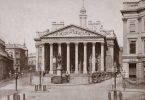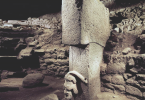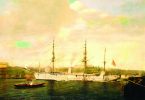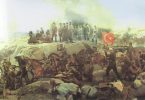The Ottoman knew an aesthetic method of honouring those who benefited the state: Decorating them with flamboyant medals and badges made of precious metals.
Summer of 1798… Selim III is on the Ottoman throne. The days when waters of Mediterranean heat up in a very short time. Rumour has it that Napoleon Bonaparte left France… The destination is Egypt under the Ottoman rule. But there is one thing that the French did not consider: the English.
Egypt is an essential destination en route particularly for the British who aspire to make their presence felt in India. It is safer for Ottomans to rule Egypt for time being rather than the French. Despite the measures taken by the Ottomans, the British do not want to leave it to chance, and the British navy under command of British Admiral Nelson drops anchor off Egyptian shore.
THE FIRST ORDER OF MERIT TO ADMIRAL NELSON
A big surprise awaits the French in those days. Because the British have no intention of losing this spot of major importance to their opponents. The winner of the battle between the two opponents are the British. When the news reach Istanbul, it is welcomed with cheers. Sultan Selim immediately orders gifts sent to Nelson and the soldiers under his command. Until that day, gifts presented to foreigners as gratification or reward were limited to furred kaftans, golden snuff boxes or horses but this time Sultan goes beyond general practices and instructs Nelson to be awarded with a fancy bejewelled badge. The “badge” used in Europe to reward military and civil competence thus enters Ottoman life.
BADGES BROUGHT ABOUT BY REFORMS
The Ottomans had been using “hilat”, a type of furred kaftan to reward success or merit since ancient times. A commander, statesman or pasha who displayed merit were dressed in a hilat with a ceremony. Similarly to the badge, crest, aigrette, wreath, or chandelier were presented. However in period of Sultan Mahmut II, the janissary guild was terminated, and a series of military and administrative reforms were made. The most significant was the clothing reform; the conventional military, administrative and civil bureaucracy attires were replaced with fez, jackets, and trousers. The clothing reform brought along the use of badges and medals which was a relatively new practice. Because traditional rewards as hilat, crest, aigrette did not suit modern attire. In order to rid of this confusion, it was decided to present the Ottoman citizens with badges or medals, awarded exclusively to foreigners until that day.
BASED ON RANK
Turkish badges vary due to the period, individual and the reason of issue. Every sultan after Mahmut II, had new badges designed for their respective periods. Additionally, in Mahmut II period, badges were designed to specify the ranks with the establishment of new military organisation. There were four kinds of bejewelled badges, based on “ûlâ, saniye, salise and rabia” ranks. Order of Honours that emerged in the same period were made of gold and silver and bedecked with diamonds. In the period of Sultan Abdulmecid who ascended to throne after Mahmut II, another badge was designed with the name “order of merit”. This order was usually awarded to high-ranking officers for their outstanding success. This orders awarded to high-ranking officers were handed down to successors in case of death. However the successor was unable to put on this badge without permission.
BADGES TODAY
Although Turkish decorating tradition was shortly interrupted after the fall of the Ottoman State, it is still continued today. With the law passed by Turkish Grand National Assembly on November 26th 1934, the practice of awarding civil ranks and orders was discontinued, and putting these on was prohibited. However due to the need, three new decorations with titles “state”, “republic” and “merit” were designed in 1983 to be awarded to foreigners. State is for presidents, republic is for foreign prime minister and secretaries, and merit is for people who work in fields of science and art for Turkey’s benefit.
VARIOUS DECORATIONS
Nişan-ı Âli İmtiyaz (Sublime Order of Merit): Order was designed as a replacement to order of merit awarded in Sultan Abdulmecid period, in the period of Sultan Abdulaziz who ascended the throne after passing of Sultan Abdulmecid. In the middle of the badge that resembles a circular solar disc, there is a golden plate with Sultan Abdulaziz’s signature on.
Nişan-ı Osmanî (Ottoman Badge): This was designed in the period of Sultan Abdulaziz to honour and merit those who showed excellence in civil services.
Şefkat Nişanı ( Order of Compassion): This was an order designed in the period of Sultan Abdulhamid II to decorate women who worked for the benefit of the state and nation during times of war and events as earthquake, fire and flood. The golden badge with a pentagonal star shape, has a core in the middle and a violet glaze.









Leave a Comment